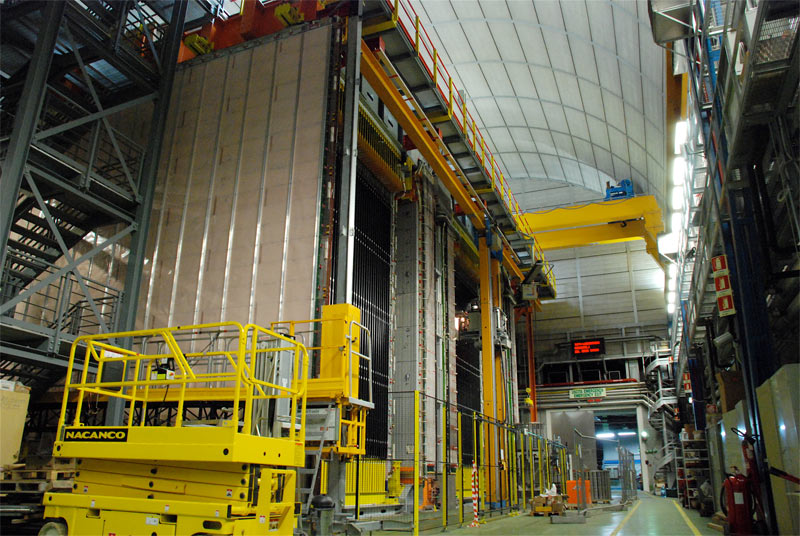
Nothing goes faster than the speed of light. At least, we didn't think so.
New results from the CERN laboratory in Switzerland seem to break this cardinal rule of physics, calling into question one of the most trusted laws discovered by Albert Einstein.
Physicists have found that tiny particles called neutrinos are making a 454-mile (730-kilometer) underground trip faster than they should - more quickly, in fact, than light could do. If the results are confirmed, they could throw much of modern physics into upheaval.
The results come from the OPERA experiment, which sends sprays of neutrinos from CERN in Geneva to the INFN Gran Sasso Laboratory in Italy. After analyzing the results from 15,000 particles, it seems the neutrinos are crossing the distance at a velocity 20 parts per million faster than the speed of light. By making use of advanced GPS systems and atomic clocks, the researchers were able to determine this speed to an accuracy of less than 10 nanoseconds (.00000001 seconds).
Realizing full well how scandalous the results will be if they are borne out, the scientists behind OPERA, led by Antonio Ereditato of the University of Bern, have decided to make their data public, in hopes of inviting scrutiny that could make sense of such radical findings. The scientists also intend to gather more data and further analyze their measurements in order to establish them more fully, or refute them. Their results will be published Friday (Sept. 23) on the physics preprint site ArXiv.
Previous studies have found that certain materials can travel faster than light through a medium. For example, certain particles are able to move more swiftly than light when travelling through water or oil. However, nothing should be able to move faster than light through a vacuum.
This cosmic speed limit, 299,792,458 meters per second (about 700 million miles an hour), has long been thought to be impassable. It forms the backbone of Einstein's seminal Theory of Special Relativity, published in 1905. To rewrite this law would have broad-ranging implications, including even the possibility of time travel.



Well, lets get to rewriting then.